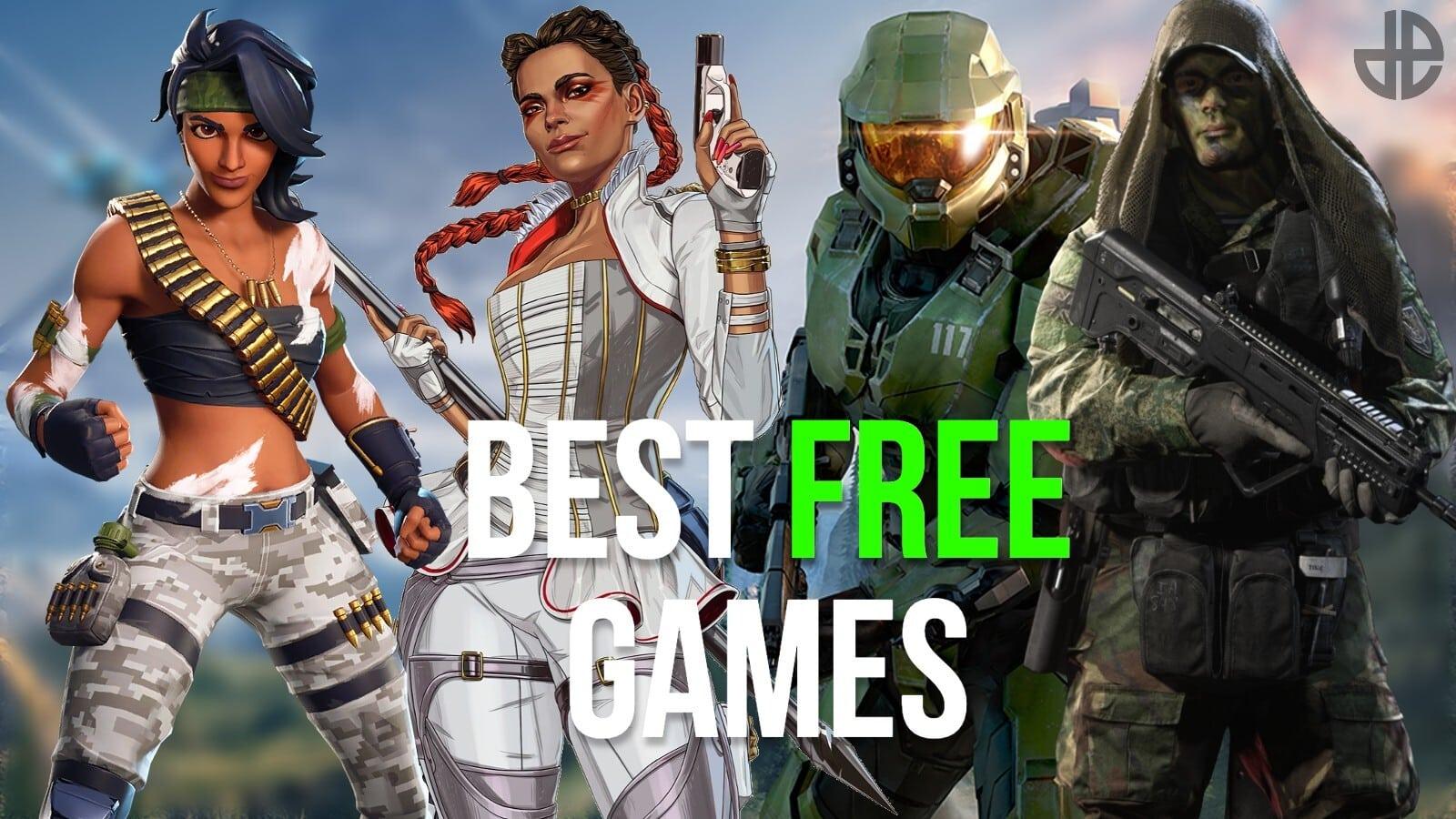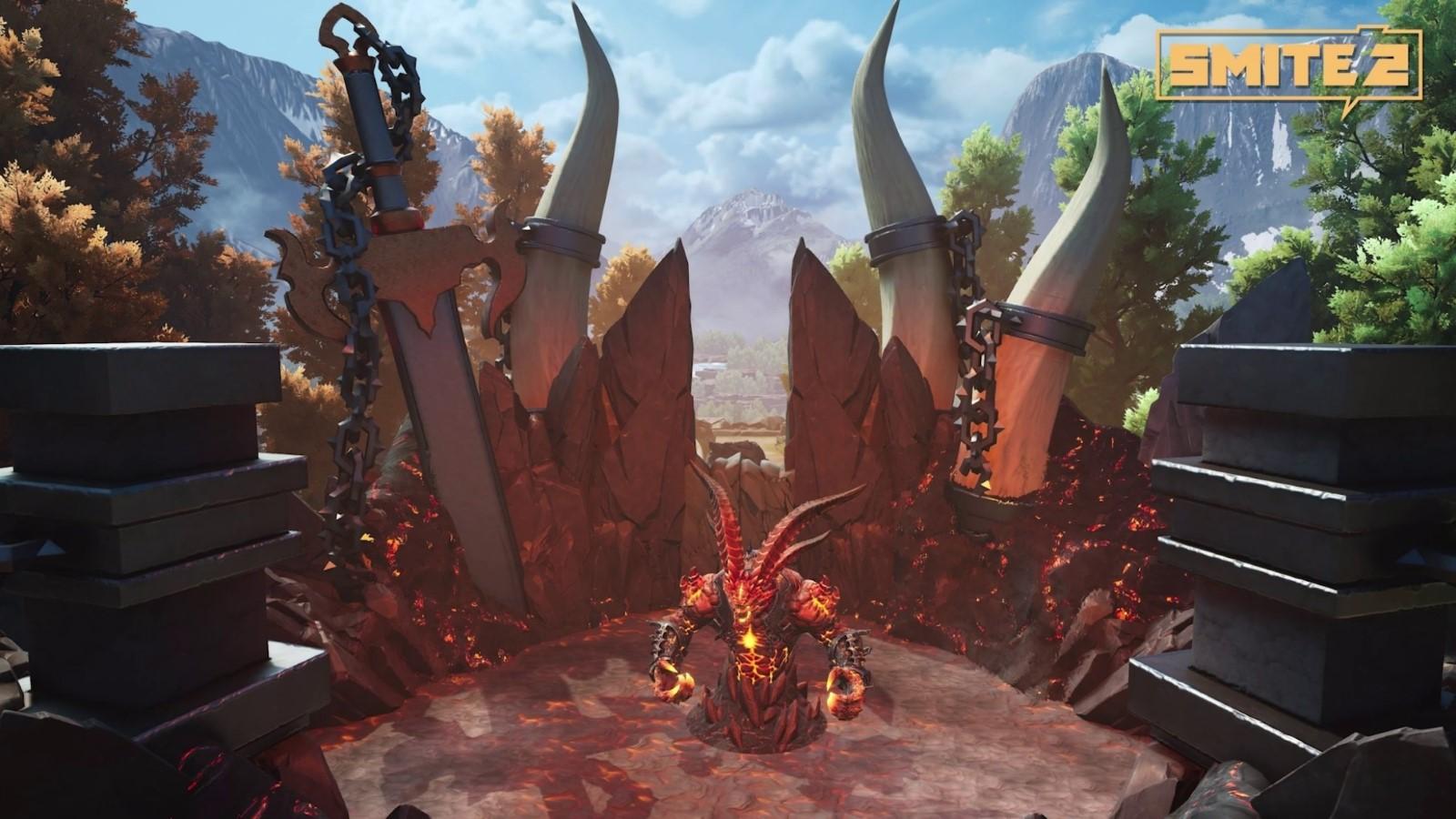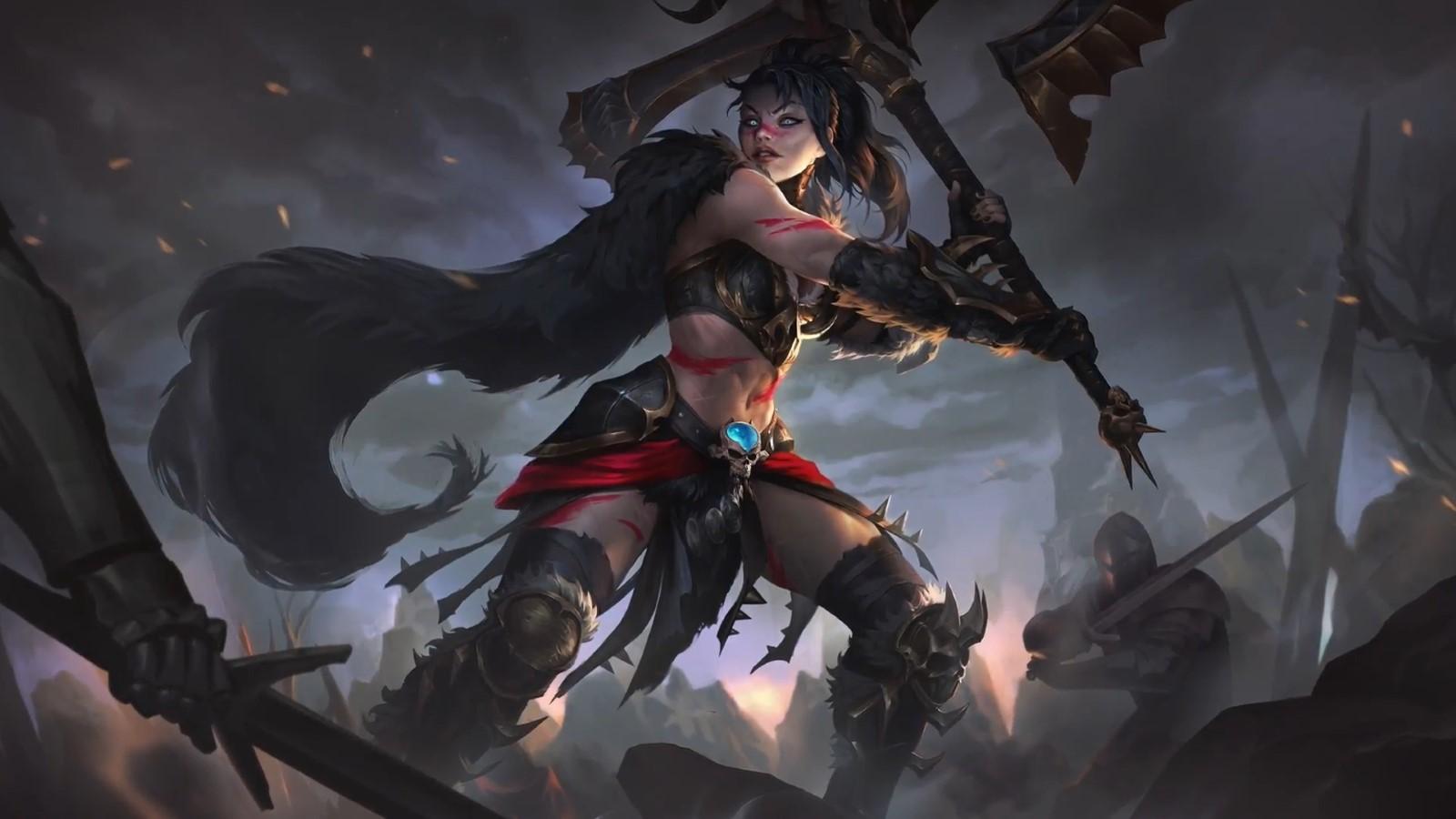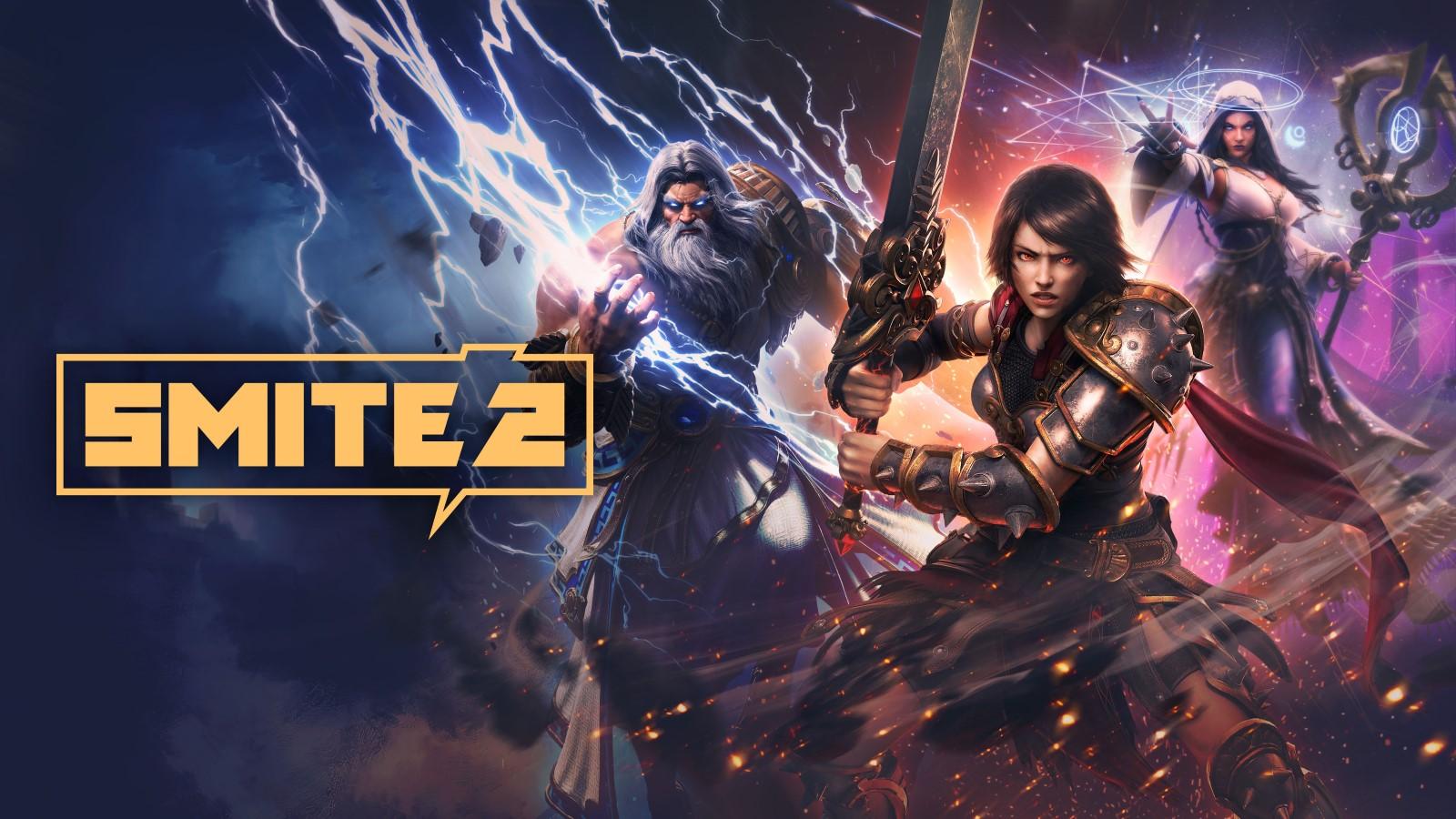The untold miracles behind Smite 2, a game that could save an entire company
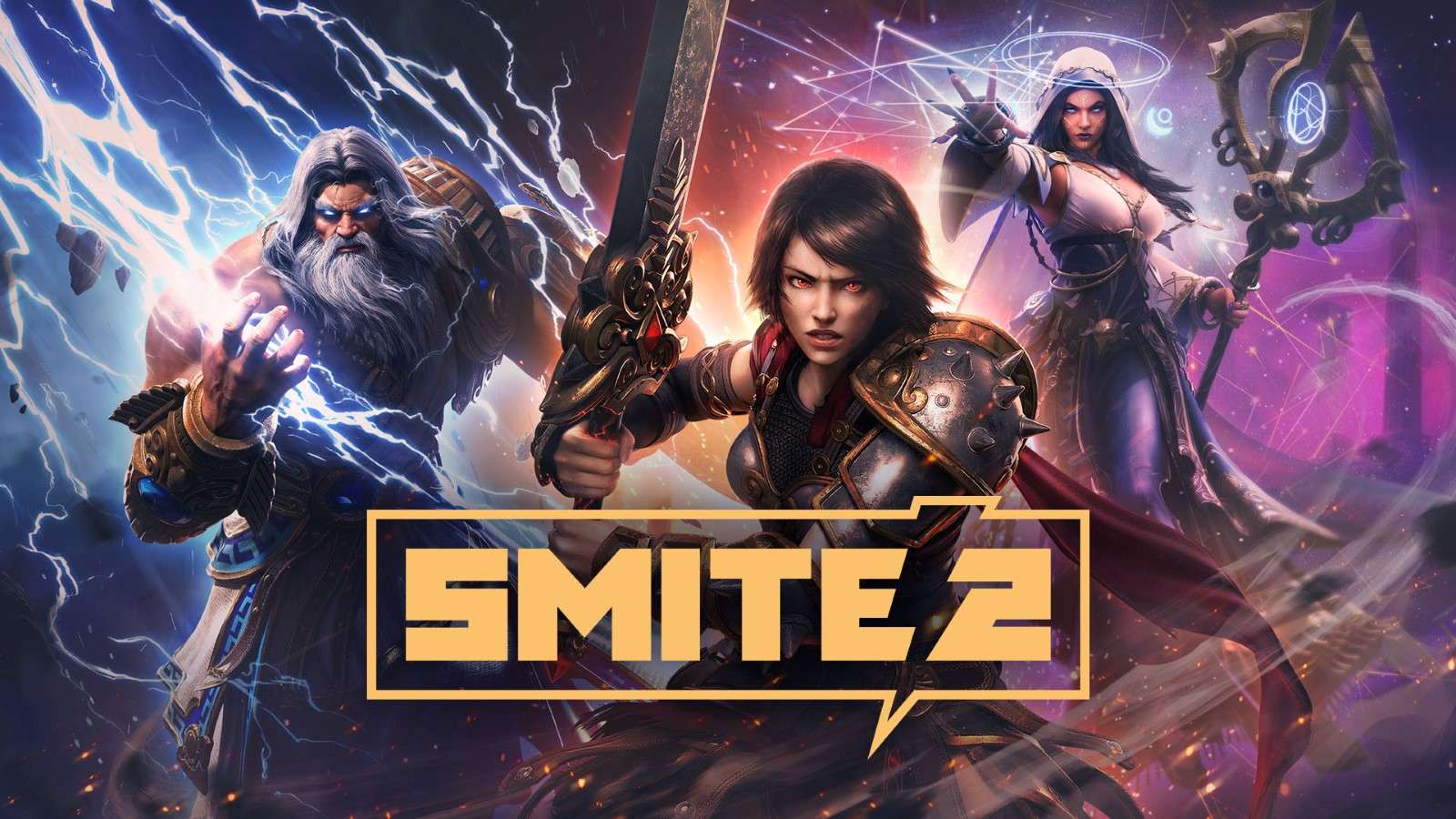 Smite 2
Smite 2Dexerto sat down with the developers behind Smite 2 and playtested the game in-person during the Smite World Championship to learn about what went into creating it from the developers. The story behind this game is one of people who put everything they had into a sequel unlike any other in the live service space.
For many, Smite exists as a game they tried at one point, had fun with, and dropped years ago for some other new multiplayer experience that’s come along since Smite’s original release.
It’s been a long time since Smite was initially revealed in 2011, and the entire industry has changed since then – especially when it comes to multiplayer games. And, though Smite has maintained a steady player base, that pool of players has been on the decline in recent years.
HiRez and its subsidiary game studios have always been focused on creating multiplayer experiences. 10 years ago, it was possible to craft a good multiplayer title and profit for a few years, put the game into maintenance mode if the player base waned, and release a new game to put yourself back in the spotlight.
Now, with so many big competitive multiplayer games vying for everyone’s attention with the goal of retaining players for several years, this shotgun approach doesn’t work like it used to. Convincing someone who has thousands of hours in games like Apex Legends, League of Legends, and Overwatch 2 to play something else is a tall order.
Hand of the Gods, Divine Knockout, Realm Royale, Rogue Company and many other titles from the publisher have failed to hold onto an audience and are now either defunct or on life support with a drought of new content. With the player bases of Smite and Paladins on the decline as well, something had to change if HiRez wanted to keep their fleet of dev studios alive and stay afloat as a company.
So, HiRez is staking their bets on a sequel to their most successful and well-known franchise: Smite 2. And, after talking to the developers, it’s become clear that this game’s mere existence is a miracle.
Evolve or die
Smite 2 is a necessary sequel. It’s not a successor like Overwatch 2 or Counter-Strike 2 (in other words, a glorified content patch) – Smite 2 is the real deal. Though the core design philosophy of the game is similar, the experience of playing it is very different.
Don’t expect it to be like Overwatch 2, where playing a hero between the first and second game is the exact same experience. Someone trying to play any god with their Smite 1 knowledge in mind will be in for a learning curve when playing Smite 2 for the first time.
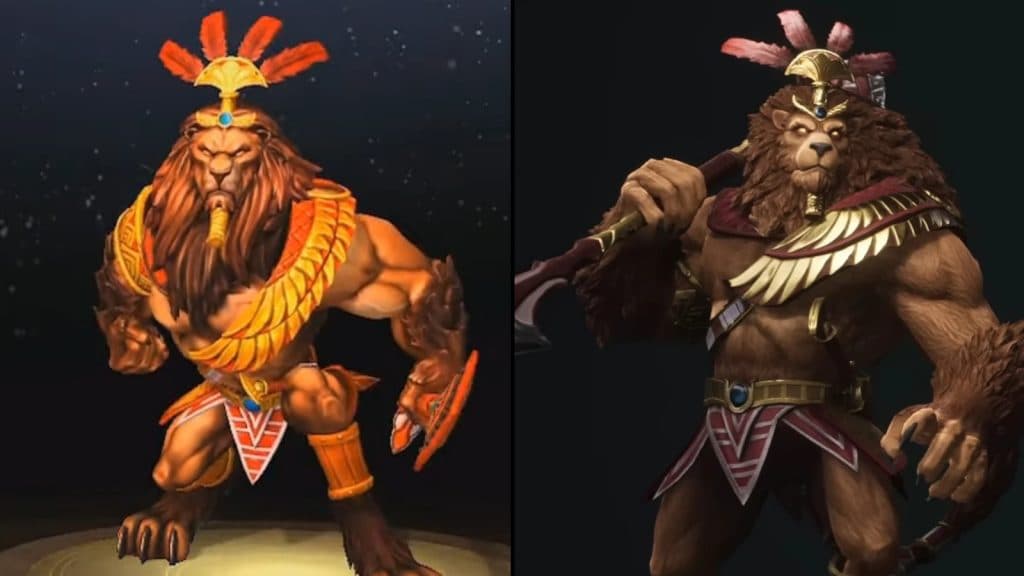 Smite 1’s Anhur model vs Smite 2’s
Smite 1’s Anhur model vs Smite 2’sAll of the game’s systems have been overhauled, and Smite 2 will exist alongside its predecessor as it blossoms and grows through what the devs hope will be years of active development.
However, the biggest shock is just how quickly the game came together.
According to what the developers at Titan Forge told Dexerto, Smite 2 took just 13 months to put together, with active development kicking off early in January 2023. In an industry where games take years to develop, how’d they manage to put together a working game in just over a year? And why Smite 2?
“I mean, you hear the crowd out there,” said Titan Forge General Manager Travis Brown, referring to the roaring crowd behind us in Arlington, Texas at the Smite World Championship. “We just have a strong starting point. We make a game that they love, just strictly better. That sounds like a win.”
Travis continued, “We started working on a ‘Smite: Next’ project probably two or three years ago, but we were just dabbling. We knew what we wanted to make in January 2023, we knew Smite 2 was the thing we could make and be extremely successful. We knew where we were headed, we had the power of Unreal 5, and we just hit the ground running.”
Here’s the thing, though: Smite 2 was more of a necessity than a want for Titan Forge in many ways, one of which was detailed by Executive Producer Alex Cantatore.
“Smite’s old HUD was very… It looked old. We were like, ‘We really have to update the HUD to be more modern.’ We needed to add some functionality because, on console, you couldn’t change it or resize it. We spent probably 18 months with a full team of UI people rebuilding that HUD, and… When it shipped, it wasn’t nearly as good as the old HUD from a lot of players’ perspective.”
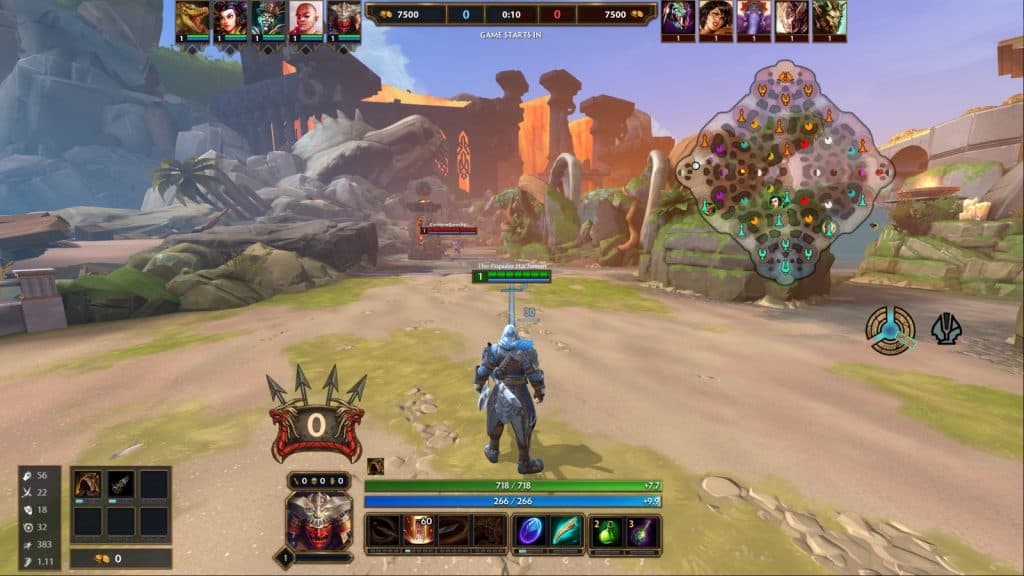 Smite’s current HUD works, but it’s dated and covers much of the screen.
Smite’s current HUD works, but it’s dated and covers much of the screen.The devs were forced to temporarily revert the HUD changes after they came out due to performance issues and, in some cases, full-on game crashes. The final result pictured above is still better than what the HUD looked like previously, but it took a great deal of development time and money to put together for something the team wasn’t all that happy with.
Alex continued, “I was sitting there scratching my head saying, ‘Man, it took us this long to do this, and it didn’t it didn’t even turn out well.’ These people are great designers, but they’re held back by trying to do this all in Flash.” And yes, he’s talking about Adobe Flash, software that’s older than most of Smite’s player base.
“It’s just so time intensive and so painstaking. And I saw friends who are working on Divine Knockout at the time, and I saw what they were able to accomplish with Unreal 4. It was like, ‘Man, I wish we had that,'” Alex explained.
What took months with Adobe Flash to integrate into Unreal 3, the team on Divine Knockout could do in literal days in Unreal 4. And, if we’re comparing Smite 1’s HUD to Smite 2’s, it’s clear to see that things are much more clear & easy to read while letting the player see more of what’s actually on their screen.
You may not think about something like the HUD being one of the most important elements of a game on the surface, but, especially in a game like Smite that requires the player to take in a ton of information at once, having that info be readable and accessible is key to creating a clean and frictionless gameplay experience.
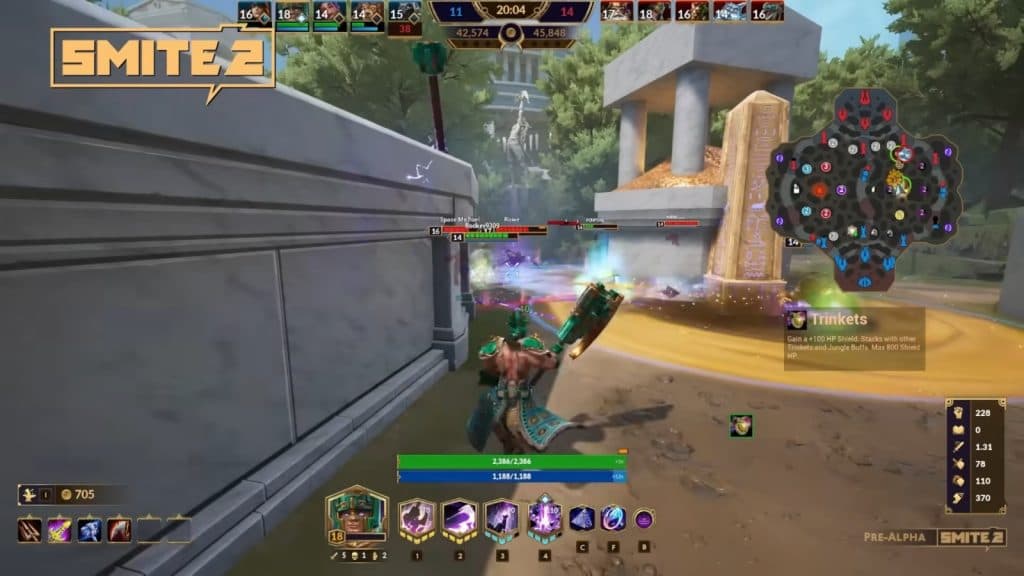 Smite 2’s HUD is a big improvement over the latest version of Smite 1’s.
Smite 2’s HUD is a big improvement over the latest version of Smite 1’s.Unreal 4 was what opened their eyes to the power of an engine upgrade, but they’d ultimately end up developing with Unreal 5. It’s an even better engine in a lot of ways, but this decision wasn’t made lightly.
Porting from Unreal 3 to Unreal 4 is difficult enough, and this conversion would require the devs to leapfrog through an entire generation. As a result, the art team had to do an immense amount of work to bring old models and assets into the modern day. It wasn’t as simple as hitting a button and having all of Smite 1’s assets look great in Unreal 5.
This is also why almost all of Smite 1’s skins have been lost in the transition, something that didn’t go over too well with players that spent thousands on the prior game’s cosmetics. Even if Smite 2 has a ton of incentives and rewards for players who have invested a great deal of time and money into Smite 1.
While there are some big drawbacks to scrapping so much of Smite 1 for the sake of bringing Smite 2 into existence, the benefits vastly outweigh the downsides.
Ditching the “hail mary” approach to development
Unreal Engine 3 was originally released in 2006, and it was the backbone of many 360/PS3 era gaming greats. However, it also means that Smite 1 is built upon tools that are almost 20 years old. The game’s foundation is archaic at best.
God designer Daniel ‘PonPon’ Cooper spoke about just how difficult it was to design new gods and features, claiming that the talented team working alongside him was significantly held back by the aging tools they were using.
“When I’m working on a character, if I want to do this really cool thing, it’s kind of a hail mary. We have one shot at it. Because, if it doesn’t go well, we have to fall back to really simple solutions because that’s all we have available to us. And that’s that feels very restrictive. If you’re not constantly fighting that urge, you might go the safe path without even realizing it.” PonPon explained.
“With what I’ve been able to do [in Unreal 5], what I’ve been able to prototype, and what I’ve been able to mess around with, I didn’t realize how much I actually put myself in that box with Unreal 3.”
PonPon went on to describe the development of Cliodhna, one of Smite’s most ambitious god designs. She has the ability to walk through walls and jumpscare people as a ghastly assassin. Her kit boasts a cohesive feel with abilities that play well around each other – something that’s hard to achieve in a MOBA.
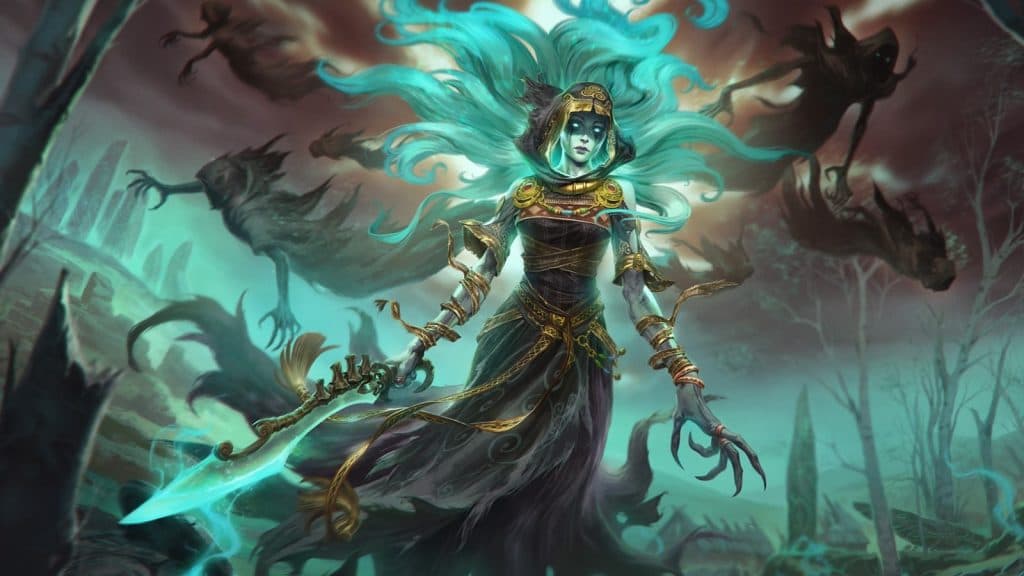 Cliodhna is an assassin who can walk directly through walls and plant traps for players, though designing her around this mechanic was a true challenge for the developers.
Cliodhna is an assassin who can walk directly through walls and plant traps for players, though designing her around this mechanic was a true challenge for the developers.However, executing on PonPon’s vision for the god was a massive undertaking for the team, one that required a ton of resources from the team to pull off by the skin of their teeth.
“I was working on Cliodhna, and we were talking about her walking through walls tech. And that was already a major ask – it probably was asking too much at the time. It did cost a lot of development time, but the backup kit just wasn’t nearly as interesting.”
The backup plan was always there, but its existence was a hinderance to the team’s true vision for a character’s kit, one endured when need be for the sake of releasing new gods within a reasonable timeline. But, with Unreal 5, the process of prototyping and pushing new concepts into the testing phase is much faster, as explained by Travis.
“When we were working on some type of Smite: Next iteration, we were able to pull together a demo in December [2022] for a game, and then we quickly pivoted to something else and play-tested that two weeks later, then we pivoted to another thing in a day. That’s when I was like, ‘What if we just pivoted to making a Smite 2?’ If we can do it that quick, why not just make Smite 2?
“And so, we spent the next month on it and, sure enough, we built something that had a lot of potential. I was thinking, ‘We should really dive into this.’ It was a lot in a short time, but we built it really quick. That sort of reaffirmed that Unreal 5 Smite could be something amazing.”
The speed with which Titan Forge put Smite 2 together is staggering, but that wouldn’t mean anything if the trailer and promotional material was all an act of smoke and mirrors to advertise a lackluster game. However, that couldn’t be further from the truth.
Down to the wire
Let’s make one thing clear: Smite 2 is very good from a core gameplay standpoint. Smite 1 had a strong enough foundation to maintain players for over a decade, and Smite 2 has iterated upon that foundation.
Every hit has a weight and impact to it that’s comparable to character action games like Devil May Cry and Darksiders – titles that are meant to sell you on a power fantasy. Smite 2’s feat of making a multiplayer game where all 10 players can feel that godly power all at once is a monumental achievement, especially considering the time frame they were working with.
What’s more, pro players who tested the previous build of the game just weeks prior weren’t too keen on it going into this round of playtesting. People like iRaffer were hesitant to try Smite 2 again at all when we spoke with them in passing, claiming that a version of the title he had played just weeks prior suffered from some crippling stuttering and optimization issues.
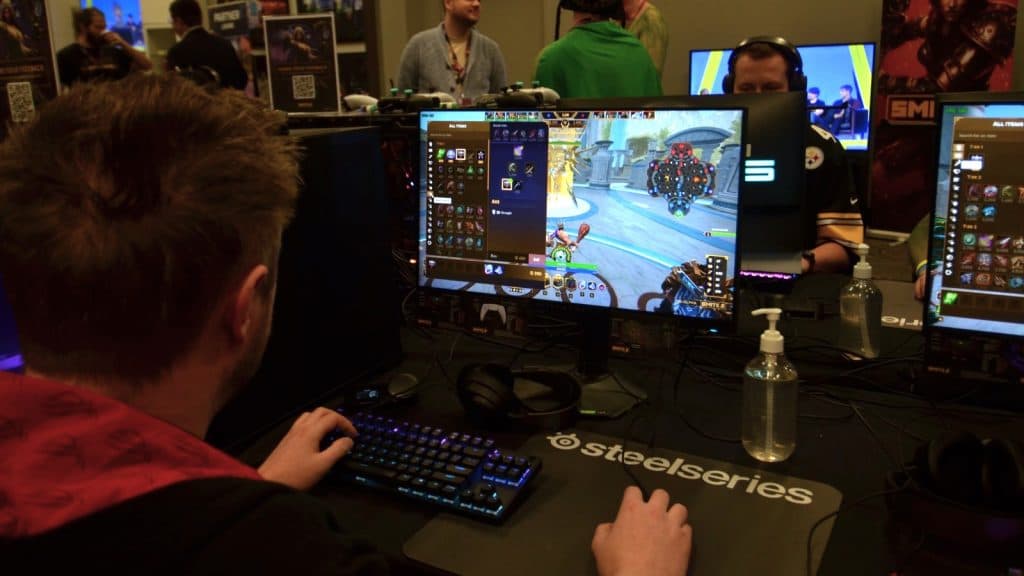 2-time Smite World Champion iRaffer playtesting Smite 2
2-time Smite World Champion iRaffer playtesting Smite 2Meanwhile, the version that was playable in the test on-site was locked at a buttery-smooth 120 FPS at 4k resolution. Granted, the PCs we were playing on were a bit overkill specs-wise, but the devs were actively commenting on how they found places to save frames and already had optimizations planned for lower spec machines.
Hell, even the keynote wasn’t fully put together yet when it was initially shown to us behind the scenes just days before the official reveal, with some scenes still having placeholders for where the final bits of B-roll would go. The devs were actively taking notes for where to adjust audio levels, where to make cuts in the video, and other small details in order to get the presentation polished and ready for the general public.
Smite’s final World Championship was the best possible time for them to reveal Smite 2 to the world, and a window they absolutely could not miss. The team rushed to get something presentable together, and they just barely made it. This story isn’t all too rare when it comes to game development, but the key difference with Smite 2 is that they worked with the goal of showcasing something truly impressive.
What you see in Smite 2’s trailer is exactly what you get in-game. Rather than focusing development time on trying to sell you a game that doesn’t exist with CG trailers, they put everything they could into creating a game that’s actually worth bragging about.
Games like Anthem that had a trailer created purely based on concept (according to an insider report from Kotaku, at least) can often create a false expectation. A CG trailer based on a concept has no business making promises, but the in-engine footage of Smite 2 is very close to what you actually get, and they managed it in just over a year of full-speed development.
This kind of development turnaround is near-unheard of in modern, AAA video games, but Smite 2’s dev team is uniquely equipped to take on this challenge in more ways than one.
A different approach to game development
One of the most surprising things about Smite 2 is the team of developers behind it. While the group is made up partially of game industry veterans who have been working in the field for decades, there are also quite a few people on board who have only worked on Smite, or have at least devoted a large portion of their lives to understanding the game.
PonPon, for instance, started as a pro player and community streamer before eventually working his way up to the dev team. David ‘Skeeledon’ Dougherty, a programmer who was overseeing our playtest, was a Smite pro player before going through college to learn his craft. He wound up getting a job at NetherRealm Studios for a bit before returning to Titan Forge to work on Smite, and he’s now making a living working on the game he had a pro career in.
With many of HiRez’s lead developers moving on to rival companies like Riot Games over the years, HiRez has chosen to stack its ranks with a mix of people who are experts when it comes to video games and folks who are experts when it comes to Smite. It’s hard to find anyone who understands the game better than those whose lives have been, in many ways, defined by it.
Several former community members and pro players are now working on the dev team, and they’re creating the best version of the game they love. It’s a little scary just how refreshing Titan Forge’s approach to development is.
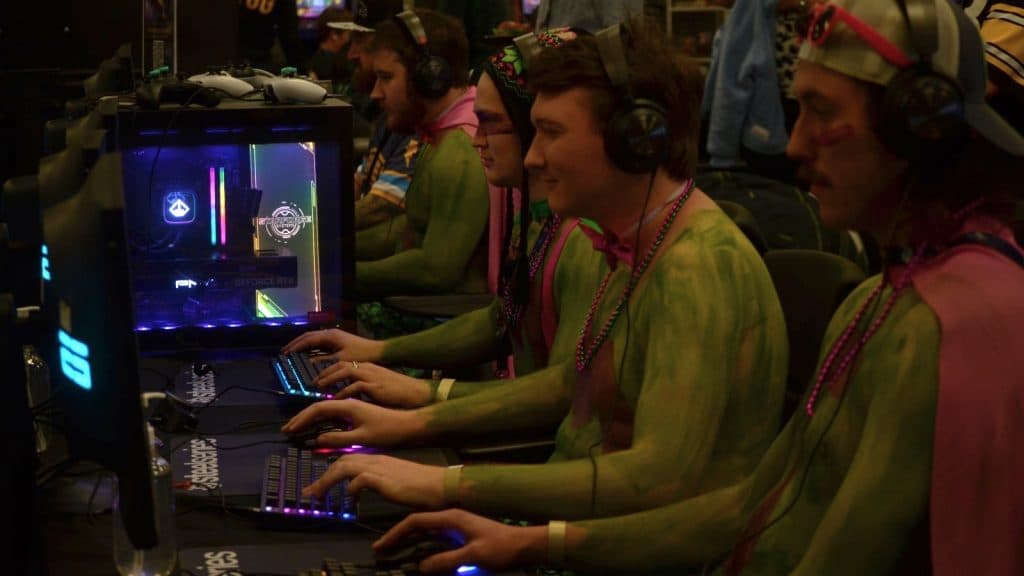
There aren’t many game companies out there that’d see a group of passionate fans in green full body paint playing a trombone in the audience and invite them to play their new game, purely cause it seemed like they’d have a good time – no fanfare and no incentive other than trying to put their game in the hands of their most dedicated fans who they know would love to have that experience.
In the past, HiRez have fumbled some of their biggest successes. Realm Royale’s player base died just months after it exploded in popularity due to some controversial balance changes that saw much of its player base move on to greener pastures. Rogue Company had initial buzz and a solid player base to start as well, but shot itself in the foot in a similar manner with game balance, a lack of new and exciting content, and an issue with rampant cheaters.
Meanwhile, Smite and Paladins’ pro scenes were both kneecapped by signing exclusivity deals with Mixer and Facebook respectively, which kept their esports scene alive in the short term but crippled their long-term growth. Though HiRez have struck gold in the past with their development studios, they’ve also missed the mark at times.
Smite 2 is yet another gamble. While they’re keeping Smite 1 up and active for as long as people play it, there’s truly no going back to it now that the sequel’s been announced and they’ve shuttered the original Smite’s pro scene. And, with Smite being their most popular game to date, this move means HiRez is putting down what is likely their biggest money maker to do something new.
There’s no mistaking that Smite 2 was a big risk from the moment it was conceived, but it feels like a calculated risk. Titan Forge knows they can’t feasibly iterate on Smite 1 any further, and they’re making the necessary changes to keep the game alive… Even if that means wiping the slate clean and starting almost entirely from scratch.
Calling Smite 2 a ‘miracle’ feels like it downplays the effort of the devs who made it happen, but there’s no better word for the sheer amount of elements that had to go right for this game to be revealed when it was. Between unavoidable issues with the first game, the incredibly tight development schedule of Smite 2, and the fact that it all came together just in time for the final Smite World Championship, this game has everything going for it – as long as it can stick the landing and maintain a long-term audience.
Out of everything HiRez could have committed to across all of its development studios, Smite 2 feels like the game worth going all-in on.
